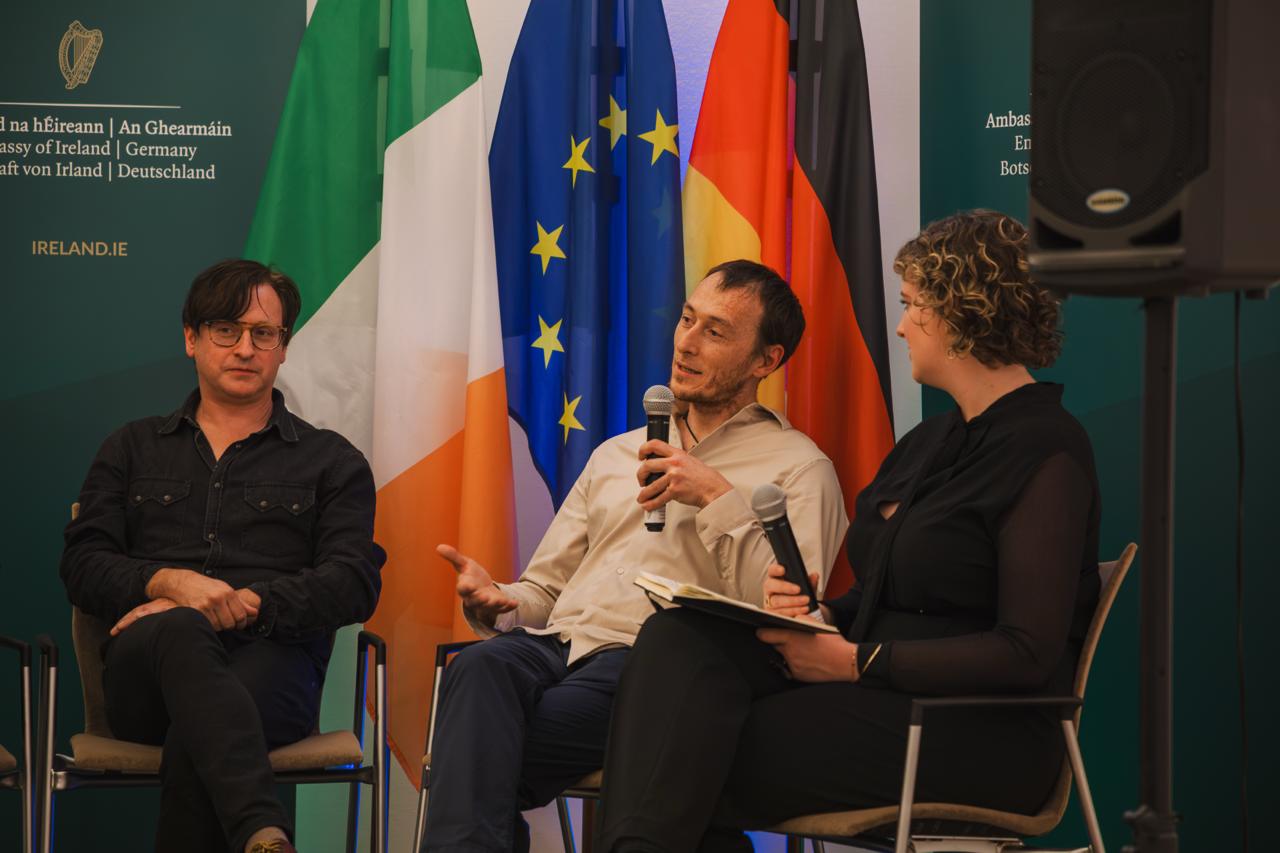AI2Peat at Berlin Science Week
CeADAR, Ireland’s Centre for AI and lead consortium member of the AI2Peat project, was delighted to attend Berlin Science Week, hosted by the Embassy of Ireland in Berlin.
The Embassy invited the AI2Peat team to present their work, highlighting the growing international interest in Ireland’s AI-driven sustainability initiatives.
Showcasing Irish Innovation Abroad
The event opened with James Kilcourse – Deputy Head of Mission – introducing Dr. Rachel Iredale of Research Ireland, who provided context about the National Challenge Fund, by which AI2Peat is funded.
This was followed by an engaging hour-long panel and interview session. The discussion featured Dr. Shane Regan, AI2Peat’s Societal Impact Champion from the National Parks and Wildlife Service (NPWS), and Dr. Corrado Grappiolo, Senior Data Scientist and AI2Peat Project Lead from CeADAR.
Exploring the Role of AI in Protecting Peatlands
The panel explored the vital role of peatlands, unique ecosystems essential for climate regulation, biodiversity conservation, carbon storage, and water quality. The speakers discussed the degraded status of many peatlands and the urgent need for scalable monitoring tools to support their protection and restoration.
AI2Peat’s contribution lies in developing AI-powered monitoring and analysis systems that are both technically innovative and environmentally responsible. Rather than relying on massive general-purpose AI models, the team focuses on small, tailored AI models designed to operate sustainably while delivering precise, domain-specific insights.
Bridging Technology, Environment, and Society
A key theme of the discussion was multidisciplinarity, how successful innovation requires collaboration across environmental science, technology, and social engagement. The conversation reflected on the importance of ensuring that technology remains a bridge, not a divide, between people and the planet.
Dr. Grappiolo, also reflected on the use of AI and how its value depends on how thoughtfully it is designed and applied to real-world challenges, like the sustainable management of peatlands.




